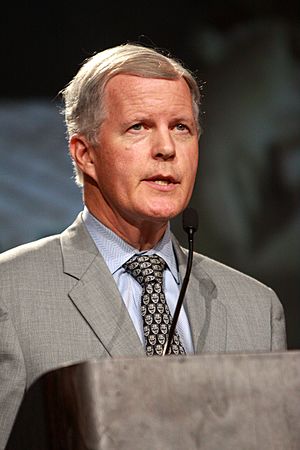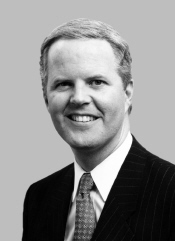Tom Campbell (California politician) facts for kids
Quick facts for kids
Tom Campbell
|
|
|---|---|

Campbell in 2013
|
|
| Dean of the Chapman University School of Law | |
| In office 2011–2016 |
|
| Preceded by | John Eastman |
| Succeeded by | Matthew Parlow |
| Director of the California Department of Finance | |
| In office December 1, 2004 – November 10, 2005 |
|
| Governor | Arnold Schwarzenegger |
| Preceded by | Donna Arduin |
| Succeeded by | Michael Genest |
| Dean of the Haas School of Business | |
| In office 2002–2008 |
|
| Preceded by | Laura Tyson |
| Succeeded by | Richard Lyons |
| Member of the U.S. House of Representatives from California |
|
| In office December 12, 1995 – January 3, 2001 |
|
| Preceded by | Norman Mineta |
| Succeeded by | Mike Honda |
| Constituency | 15th district |
| In office January 3, 1989 – January 3, 1993 |
|
| Preceded by | Ernie Konnyu |
| Succeeded by | Tom Lantos |
| Constituency | 12th district |
| Member of the California Senate from the 11th district |
|
| In office November 11, 1993 – December 12, 1995 |
|
| Preceded by | Becky Morgan |
| Succeeded by | Byron Sher |
| Personal details | |
| Born |
Thomas John Campbell
August 14, 1952 Chicago, Illinois, U.S. |
| Political party | Common Sense (2020–present) |
| Other political affiliations |
Republican (1980–2016) Independent (2016–2020) |
| Spouse |
Susanne Martin
(m. 1978) |
| Relatives | William Joseph Campbell (Father) |
| Education | University of Chicago (BA, MA, PhD) Harvard University (JD) |
Thomas John Campbell (born August 14, 1952) is an American professor, teacher, and politician. He worked for the people of Silicon Valley, California in the United States House of Representatives for five terms. A term is the length of time a politician holds a job.
Campbell is currently a professor of law and economics at Chapman University. He has also been a professor at Stanford Law School and the University of California, Berkeley. He was the dean, or head, of two different schools: the Chapman University School of Law and the Haas School of Business.
As a politician, Campbell was a member of the Republican Party. He tried to get elected to the United States Senate three times but did not win. In 2016, he left the Republican Party because he disagreed with the presidential candidate, Donald Trump. In 2019, he started a new political party called the Common Sense Party of California.
Contents
Early Life and Schooling
Thomas John Campbell was born in Chicago, Illinois, on August 14, 1952. His father, William Joseph Campbell, was a federal judge.
Campbell was a top student. He graduated as the valedictorian (the student with the highest grades) from his high school in 1969. He earned bachelor's, master's, and doctorate degrees from the University of Chicago. He also earned a law degree from Harvard Law School in 1976.
After law school, he worked as a clerk for two important judges. First, he clerked for Judge George MacKinnon on a federal appeals court. Then, he clerked for Justice Byron White on the Supreme Court of the United States, the highest court in the country.
Early Career in Government and Teaching
In 1980, Campbell finished his Ph.D. in economics and joined the Republican Party. He worked for President Ronald Reagan in the White House. From 1981 to 1983, he was the director of a part of the Federal Trade Commission, which is a government agency that protects consumers.
Professor and Dean
In 1983, Campbell became a law professor at Stanford Law School. He became a full professor in 1987.
In 2002, he became the dean of the Haas School of Business at the University of California, Berkeley. As dean, he made sure students learned about being responsible in business and doing the right thing.
From 2004 to 2005, he took a break from his job as dean to work for California's governor, Arnold Schwarzenegger. He was the director of the California Department of Finance, which manages the state's money.
In 2009, Campbell began teaching at Chapman University School of Law. Two years later, in 2011, he became the school's dean.
Political Career
Campbell served in the United States House of Representatives, which is one part of the U.S. Congress. He represented areas in Silicon Valley, a region in California known for its technology companies.
During his time in Congress, Campbell was known for being a moderate Republican. This means his views were often in the middle, not strictly conservative. He supported some ideas that were popular with the Democratic Party. He was also a fiscal conservative, meaning he believed the government should be careful with its spending.
First Time in Congress (1989–1993)
In 1988, Campbell ran for a seat in the U.S. House of Representatives. He won the election and was easily re-elected in 1990.
1992 Senate Campaign
After two terms in the House, Campbell decided to run for the U.S. Senate in 1992. He ran in the Republican primary election, which is a contest to see who will be the party's main candidate. He narrowly lost the primary to a more conservative candidate, Bruce Herschensohn.
California State Senate (1993–1995)
In 1993, a seat opened up in the California State Senate. The district was similar to the one he had represented in the U.S. House. Campbell ran in a special election and won.
While in the State Senate, a magazine named him the Best Problem Solver, the Most Ethical State Senator, and the Best State Senator overall.
Return to Congress (1995–2001)
In 1995, a U.S. House member from a district in San Jose retired. Campbell ran in the special election to fill the seat and won, even though the area had more Democratic voters. He was re-elected in 1996 and 1998.
In 1997, he was the only Republican in the House to vote against a major tax cut law because he was concerned about government spending.
Kosovo War
In 1999, Campbell and a group of other Congress members sued President Bill Clinton. They argued that the president had gone to war in a region called Kosovo without getting permission from Congress, which they believed was required by law. A judge dismissed the lawsuit.
2000 Senate Campaign
In 2000, Campbell ran for the U.S. Senate again. He won the Republican primary but lost the main election to the current senator, Dianne Feinstein.
2010 Senate Campaign
After a break from politics, Campbell decided to run for office again in 2010. He first planned to run for Governor of California but then switched to run for the U.S. Senate for a third time.
He faced Carly Fiorina in the Republican primary. Fiorina's campaign ran ads that attacked Campbell. One famous ad, called the "Demon Sheep" ad, showed Campbell as a "wolf in sheep's clothing."
Campbell's campaign was also hurt by a past connection to a professor named Sami Al-Arian. Years earlier, Al-Arian had been accused of helping a group the government considered dangerous. Campbell had received campaign money from Al-Arian and had written a letter supporting him. Campbell later said he did not know about the serious accusations against Al-Arian at the time.
Fiorina won the primary election by a large number of votes. She later lost the general election to Barbara Boxer.
Leaving the Republican Party
In 2016, Campbell publicly criticized the Republican presidential nominee, Donald Trump. Campbell wrote an article saying he could not support Trump because of things Trump had said. He felt Trump's words were reckless and showed a lack of respect for the law. Soon after, Campbell officially left the Republican Party and registered as an independent voter.
In 2019, Campbell helped create a new political party in California called the Common Sense Party of California. The party focuses on finding middle-ground solutions to problems.
Personal Life
Campbell married Susanne Martin in 1978.
Books
- Separation of Powers in Practice (2004)
See also
- List of law clerks of the Supreme Court of the United States (Seat 6)
Images for kids
-
Campbell (right) with Intel founder Gordon Moore and Sun founder Scott McNealy



